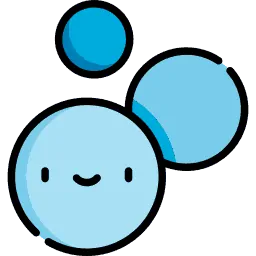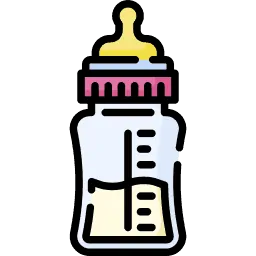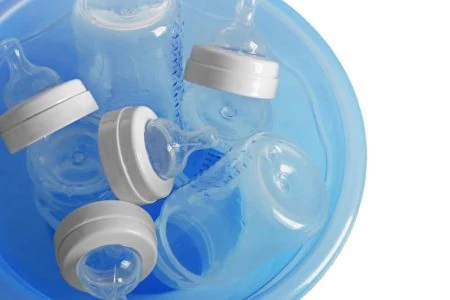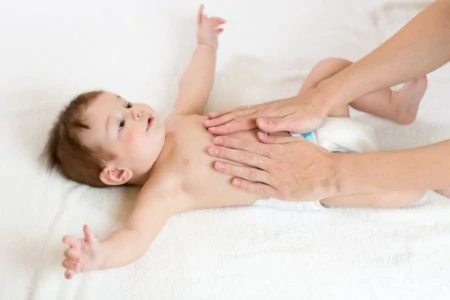Seeing your baby in pain is heartbreaking. When gas and colic strike, you feel helpless, tired, and willing to try just about anything to stop the tears. While there is no magic cure-all, the right gear can make a massive difference.
We spent hours researching the science behind air ingestion, talking to exhausted parents, and comparing the top contenders on the market. We’ve narrowed it down to the seven best bottles for colic and gas. With one of these in your rotation, we hope those tummy troubles (and the screaming) become a thing of the past.
- Unique internal venting system
- BPA-free
- Preserves nutrients in milk
- Simple, classic design
- Clinically tested
- Firm nipple prevents collapsing
- Flexible, natural feeling
- Handles are available for self-feeding
- True slow-flow nipple
- Nipple mimics breastfeeding
- Simple design
- Includes low flow nipples
- Soft and skin-like nipple
- Comfortable to hold
- Regulated flow
Do Anti-Colic Bottles Work?
To understand if they work, you have to look at the cause. The primary culprit of infant gas is swallowed air. When a baby gulps down milk, they often gulp down air with it. If that air gets trapped in the digestive system, it causes pressure (1).
If that pressure isn’t released via a good burp or passing gas, you get a screaming, uncomfortable baby.
Anti-colic bottles are designed to tackle the physics of feeding. By reducing the vacuum inside the bottle and minimizing air bubbles in the milk, they limit the amount of air your baby swallows. Less air in means less gas out.
While the exact cause of colic remains a mystery, we know it involves extreme fussiness without a clear medical reason (2). Unfortunately, all that crying makes babies swallow more air, creating a vicious cycle.
The right bottle can help break that cycle by:
- Preventing air intake: Vents and valves keep air out of the nipple.
- Reducing bubbles: Keeping the air away from the milk prevents aeration.
- Pacing the feed: Slowing down the flow helps prevent tummy upsets.
How to Choose an Anti-Colic Baby Bottle
Most modern baby bottles have some sort of venting technology, but they all go about it differently. Since every baby latches and drinks differently, it helps to know what to look for.
Here is a breakdown of the features manufacturers use to keep air out of your baby’s belly:
Product Reviews
We put the top contenders to the test to see which ones actually reduce the bubbles (and the tears).
Dr. Brown's Natural Anti-Colic Bottle
Best Internal Vent Bottle
Dr. Brown’s is often considered the gold standard for colicky babies, and for good reason. The magic lies in the internal green vent system. Unlike other bottles where air mixes with the milk, this tube funnels air directly to the back of the bottle.
This design eliminates the vacuum effect entirely. Because the air never bubbles through the milk, it also helps prevent the oxidation of nutrients. Clinical studies suggest this helps retain higher levels of vitamins C, A, and E (4).
It mimics the mechanics of breastfeeding quite well since there is no vacuum resistance to fight against. Your baby can feed at their own pace without gasping. The trade-off is the cleaning process; you need to use the tiny included wire brush to clean the vent tube, which can be tedious at 3 AM.
Pros
- Internal vent system eliminates vacuum pressure.
- Proven to preserve milk nutrients.
- Fully BPA free.
- Top-rack dishwasher safe.
Cons
- Multiple parts make cleaning more time-consuming.
- Narrow neck can be harder to fill with powder formula.
Our Ratings
Philips Avent Anti-Colic Baby Bottles
Best Nipple Vent Bottle
When you are a sleep-deprived parent, simplicity is a lifesaver. These Avent bottles consist of just four straightforward pieces: bottle, nipple, ring, and cap. They are easy to assemble and fully dishwasher safe.
The “AirFree” vent is unique because it’s integrated into the nipple assembly. It is designed to keep the nipple full of milk, not air, even when the bottle is held horizontally. Clinical tests have backed this up, showing that these bottles reduced nighttime fussiness by approximately 60% compared to standard bottles (5).
Another bonus is compatibility. These mix and match with most of the Philips Avent range, so you can swap parts with their toddler cups later on. The nipples are ribbed to prevent them from collapsing during a vigorous feed.
Pros
- Minimal parts make for easy cleaning.
- Clinically proven to reduce fussiness.
- Ribbed nipple texture prevents collapse.
- Compatible with the wider Avent ecosystem.
Cons
- The “slow flow” might still be too fast for preemies.
- You must align the vent properly to prevent leaks.
Our Ratings
Comotomo Baby Bottles
Best Anti-Colic Bottle for Breastfed Babies
The Comotomo bottle is immediately recognizable by its soft, squeezable silicone body. This isn’t just for comfort; the flexible material allows the bottle to collapse slightly as the baby drinks, mimicking the physics of breastfeeding.
Dual anti-colic vents on the nipple ring ensure good air circulation without any extra tubes or straws to wash. The super-wide neck is a dream for cleaning; you can actually fit your whole hand inside to scrub it, meaning you might not even need a bottle brush.
It is heat resistant and dishwasher safe. Because the silicone is grippy and soft, it’s also a great option for older babies learning to hold the bottle themselves.
Pros
- Soft silicone mimics natural skin and breast shape.
- Super wide neck makes cleaning incredibly easy.
- Dual vents prevent vacuum buildup.
- Safe for microwave, boiling water, and dishwashers.
Cons
- Silicone takes longer to warm up in a bottle warmer.
- Ideally requires two hands to screw the lid on tight.
Our Ratings
MAM Anti-Colic Bottles
Best Vented Base Bottle
The MAM Easy Start bottle is a favorite among European parents and is gaining massive traction in the US. The vented base is highly effective; studies show that 80% of parents reported a reduction in colic symptoms after switching to MAM.
The nipple is flat rather than round, designed to fit the baby’s mouth more like a human nipple does during nursing. This makes it an excellent choice for switching between breast and bottle.
But the real game-changer is the cleaning. The bottle unscrews at both the top and the bottom. Even better, it is self-sterilizing. You simply stack the parts, add a little water, and pop it in the microwave for three minutes. No bulky steam sterilizer required.
Pros
- Self-sterilizing function works in the microwave.
- Flat nipple shape is widely accepted by babies.
- Vented base prevents air mixing with milk.
- Easy to clean since the bottom unscrews.
Cons
- More parts to assemble than standard bottles.
- If the bottom gasket isn’t seated perfectly, it can leak.
Our Ratings
Tommee Tippee Closer to Nature Bottles
Best Low Flow Bottle
Tommee Tippee’s “Closer to Nature” line focuses on the latch. The extra-wide nipple promotes a deep, natural latch that seals the corners of the mouth, preventing air intake from the outside.
The nipple features a sensitive anti-colic valve that eliminates excessive airflow, and the “easy-vent” technology keeps pressure equalized. The silicone is designed to flex and stretch, moving with your baby’s tongue rather than against it.
The bottle shape is short and curvy, allowing you to hold the baby close during feeds. The markings are clear, preventing the accidental overfeeding that often leads to spit-up and discomfort.
Pros
- Realistic nipple flex and stretch.
- Wide base encourages a proper, deep latch.
- Compact shape is easy to hold.
- Includes low-flow nipples ideal for newborns.
Cons
- Nipple can sometimes collapse if the valve gets stuck.
- The shape can be bulky for travel bags.
Our Ratings
Playtex Ventaire Baby Bottle
Best Bottle for Upright Feeding
The ergonomic angle of the Playtex Ventaire isn’t just for looks; it allows you to keep the bottle tilted enough to fill the nipple with milk while your baby sits upright. This prevents them from gulping air at the start or end of the feed.
Like the MAM, this bottle vents from the bottom. The micro-channel vents keep air at the back of the bottle so it never mixes with the liquid. It’s a smart design that prioritizes digestion.
The bottle comes apart at both ends for cleaning. One thing to note is that because of the bottom vent, you cannot heat this bottle in a traditional steam warmer (it might leak or melt the mechanism). You’ll need to warm the milk separately or use a warm water bath.
Pros
- Angled design supports upright feeding to reduce reflux.
- Bottom vent keeps air away from the nipple.
- Compatible with a wide variety of nipple shapes.
- Great for babies transitioning from breast to bottle.
Cons
- Cannot be used in most standard bottle warmers.
- Multiple parts require careful assembly to avoid leaks.
Our Ratings
Munchkin Latch Bottles and Transition Cup
Best for Weaning
The defining feature of the Munchkin Latch is the accordion-style nipple base. It stretches and pumps like a breast, allowing the baby to maintain a latch even if they move their head around or shift position.
An anti-colic valve at the bottom of the bottle ensures no air bubbles travel through the milk. Once your baby is ready to move on, you can swap the nipple for a spout and add handles, turning it into a transition cup.
This is a great system for parents who value longevity and want a bottle that adapts to a wiggly, active baby.
Pros
- Accordion nipple flexes to maintain latch during movement.
- Anti-colic valve located at the base.
- Converts to a sippy cup with handles.
- Great for active or fussy feeders.
Cons
- The accordion ridges can be tricky to clean thoroughly.
- Transition flow might be too slow for some toddlers.
Our Ratings
Tips for Reducing Colic While Bottlefeeding
Buying the bottle is step one. Using it correctly is step two. Even the best gear won’t work if the technique is off.
Here is how to set your baby up for success:
- Watch the angle: Never feed the baby flat on their back. Elevate their head above their tummy to let gravity help the gas bubbles rise and escape.
- Tilt the bottle: Ensure the nipple is full of milk, not air. If you see an air pocket in the tip of the nipple, tilt the bottle up further.
- Check the latch: Fish lips are the goal. Your baby’s mouth should be wide open and flanged outward, covering the wider base of the nipple, not just sucking on the tip like a straw.
- Listen for noise: Feeding should be relatively quiet. If you hear clicking or smacking noises, the latch is broken, and they are swallowing air.
- Size matters: If your baby is choking or spitting up milk, the flow is too fast. If they get frustrated or fall asleep before finishing, the flow is too slow.
- The mid-meal burp: Don’t wait until the bottle is empty. Pause halfway through to burp your baby. This releases pressure before it builds up and becomes painful (6).
























